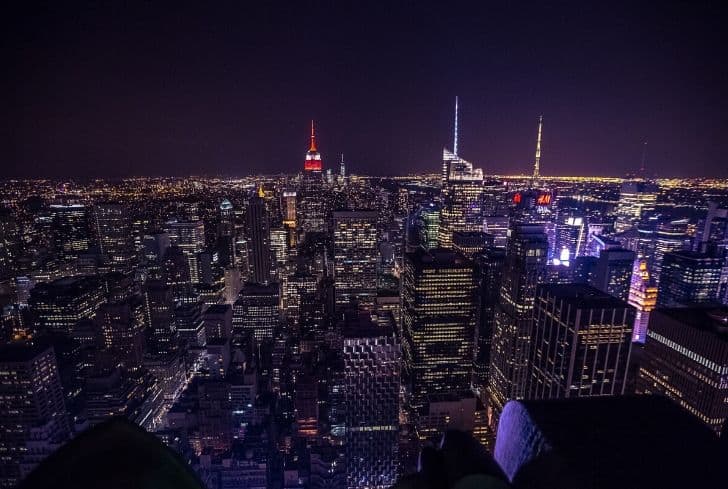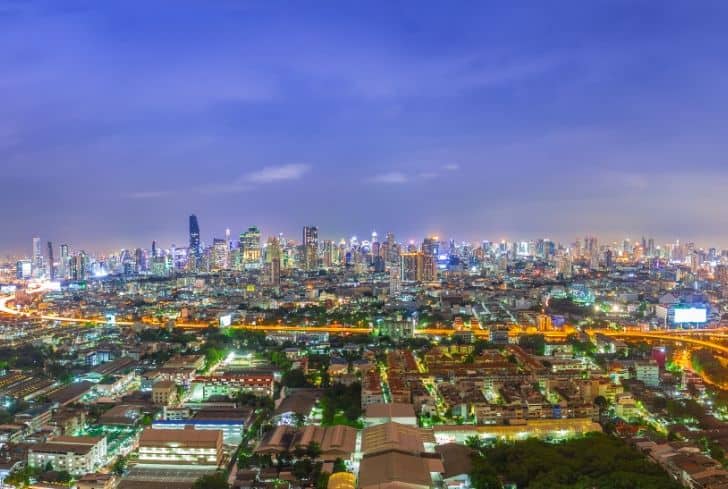Light pollution is excessive, misdirected or inappropriate outdoor lighting. Too much light pollution washes out the view of the Universe, increasing energy consumption, interferes with astronomical research, disrupts ecosystems, and affects the health and safety of humans and wildlife.
It may surprise you to know that light pollution can have as great an impact on the planet as levels of carbon monoxide and other airborne pollutants.
When most people talk about light pollution, they are speaking of all the ways that man-made light is changing the natural lighting of the environment.
For example, all the lights of a city change the way light and dark fall. There is now no more night out there, and plants or animals that are dependent on that night illumination are compromised. There are other reasons why maintaining natural light is important too.
Why is Maintaining Natural Light so Important?
While science has made great strides in creating ways to illuminate darkness, we now know that changing the natural light of any environment can have devastating effects on the plant, animal and natural life. It can even affect the weather in some cases.
The natural world is set to respond to the sun’s patterns of light. The seasons are a result of the distance of the sun to the Earth. This creates the growing and hibernation seasons that natural life recognizes because most are photosensitive.
The type of light is also a warning as to the climate to come and can trigger natural protections such as the turning of leaves and the slowing down of metabolic systems.
When I came to New York and I opened the window of the thirty-fifth-floor apartment, there’s light pollution and fog, and I couldn’t see my star. So I drew it on my wrist with a pen, but it kept washing away. Then I went to a tattoo parlor on Second Avenue and had it done.
~ Gisele Bundchen
More from the pollution:
- Causes and Effects of Indoor Air Pollution
- Causes and Effects of Noise Pollution
- Causes and Effects of Industrial Pollution
- Causes, Effects and Solutions of Air Pollution
- Causes, Effects and Solutions of Land Pollution
- Sources and Causes of Water Pollution
- Pollution, Causes and Effects
What happens to those natural processes when there is light pollution?
When there is too much light, too little light, or the wrong kind of light present, it can disrupt the natural harmonies and metabolic cycles of lifeforms on Earth.
While worrying about whether the ground worm is confused as to whether it is night or day doesn’t seem like an issue, consider that human beings have metabolic systems that are also highly light-dependent.
We are as responsive to light as a plant that turns its bloom towards the sun. In fact, Seasonal Affective Disorder (SAD) is thought to be caused by a sharp decrease in exposure to natural light.
Different Types and Sources of Light Pollution
There are many different types and sources of light pollution. Light pollution can mean visible light disruptions from flooding of too much man-made light (as in the example of the city lights); it can also mean a lack of light – again, city lights take away a form of natural illumination and replace it with an artificial means; and it can also mean changes to light that cannot be seen.
The light that cannot be seen is found on the radio-wave spectrum. When people talk about light pollution, they tend to mean one of five specific types:
1. Over-illumination
This is caused by the misuse of lights. Lights that are left on, or even street lamps that aren’t adjusted for daylight savings time, can cause millions of barrels of oil to be wasted. It can have the immediate effect of raising utility costs in an area as well as disrupting natural sleep patterns.
2. Glare
Glare is a two-fold problem in which lights are reflected off surrounding surfaces so that the light scatters and causes vision problems. It doesn’t interfere with night vision but makes it difficult to identify and place objects.
3. Light Clutter
Light clutter is a uniquely man-made issue, and it stems from poor placement design. A cluster of business lights, or streetlights, can create a contrast illumination that interferes with night vision and illumination.
It can also be strong enough to throw off the natural nocturnal systems of animals.
4. Skyglow
This is a term used to refer to the almost dome-like cover of light to city areas. The light that is escaping from street lamps, signs, homes and businesses goes up to change the quality of light in the atmosphere, and it bounces back down to the city from the atmosphere.
It can affect natural growth patterns and the ability of planes to navigate at night too.
5. Light Trespass
Not only is this a form of pollution, but it is also a crime in many areas. Light trespass refers to unwanted light entering someone’s property. It could be light from a sign coming into a residential area or any similar circumstances.
Causes of Light Pollution
Light pollution is unique as it is caused by man only. There is no comparable natural form of pollution like there is with carbon dioxide. The main causes of light pollution are:
1. Poor Planning
The placement of signage and street lights is planned by engineers, and if they do not take into account the effect placement has on the surrounding environment, they can create glare, light trespass and light clutter.
2. Irresponsible Use
You may love Christmas lights, but leaving them on all night is a form of pollution, as is leaving a room with the lights still on or setting the timers on streetlamps and not adjusting the timer for the season. Not actively choosing to minimize energy waste is a huge source of light pollution.
3. Overpopulation
That is really a zoning issue. Too many businesses or too many residences, grouped in one area can cause light pollution of many kinds.
4. Excessive Use of Light
One significant cause of light pollution is the excessive use of electric light. Electricity has become quite cheap over time; therefore, people do not care too much about their electricity consumption.
This leads to an over-consumption of electricity and also in excessive use of light, especially at nighttime.
5. Smog and Clouds
Smog and clouds can reflect the light emitted by cities and thus make the surrounding environment look much brighter, causing light pollution.
6. Lights From Cars and Other Motor Vehicles
Cars and other vehicles contribute to the problem of light pollution, especially at nighttime. The lights of vehicles shine quite bright in areas without many other light sources.
Where people live near streets that have a high traffic density, the sleep of people may be adversely impacted by the lights of cars.
7. Streetlamps, Light From Houses and Garage Lamps
Streetlamps that are built too near to houses may also cause light pollution and may affect people. Due to poor street planning, this may impact people’s sleep in an adverse manner.
There can also be light pollution simply because the neighbor just leaves the lights in the house on even late at night.
Garage lamps can be an additional source of light pollution, reaching nearby houses and affecting people when a neighbor turns on the garage lamp at nighttime.
8. Nighttime-lighting
All kinds of nighttime-lighting can affect people in an adverse way, and therefore cause light pollution. A good example would be the illuminated advertising spaces at nighttime that may cause light pollution to the surrounding houses.
9. Downtown Areas
Since downtown areas with skyscrapers usually are quite illuminated, they emit an enormous amount of light. Since many of the lights will stay on 24/7 for traffic but also for commercial purposes, they contribute to light pollution in a significant way.
Effects of Light Pollution
While many people choose to dismiss light pollution as being the price of modern life, it has serious effects on everything around it.
1. Effects on People
The wrong kind of light, or too much light has been proven to have adverse health effects and decreases the quality of life. Humans living on Earth possess a particular circadian rhythm programmed in their DNA, requiring a regular pattern of light during the day and dark during the night.
When these natural circadian rhythms get disrupted, it can have an adverse impact on health and cause cancer, cardiovascular disease, depression, and insomnia.
2. Effects on Animals
Lights can attract or repel animals and insects. Most animal life functions on a diurnal or nocturnal system that is thrown out of sync by light pollution. This can place entire species in danger.
The effect of light pollution falls severely on regions that had previously been untouched by humans. Animals in these areas may react quite sensitively to the changes in their natural environment. They may move to other places with lower light pollution, or unwanted species get attracted to human areas.
3. Effect on the Earth and Ecosystem
The Earth’s ecosystem is dependent on cycles of natural light. Since these ecosystems are usually quite sensitive to changes in their environment, they may not be able to adapt to new artificial conditions developed from human-made light pollution.
Skyglow alone can cause a loss in growth protection as the reflected light off the atmosphere will prevent the natural UV rays from reaching the Earth. This disrupts growth and decay cycles that our food, air and water supply is dependent on.
4. Sleeping Problems
People usually prefer sleeping in a dark environment, and sufficient sleep is vital for our physical and also for our mental health. Many people are uncomfortable with distractions from light when they are sleeping.
When the environment is changed into a brighter state, people may suffer from sleeping issues that can result in serious health conditions.
5. Effects on Traffic
Too much lighting or the wrong angle caused by light pollution may also have an adverse effect on traffic as it may cause temporary blindness. This can be dangerous when it comes to driving a car. If the driver’s sight is adversely impacted through excessive light clusters on certain streets, the probability of accidents may increase.
Light pollution even increases the danger to people as it can interfere with critical navigational systems for trains, planes and even automobiles.
6. Air Pollution
Light pollution also leads to air pollution affecting the atmosphere. Since for the illumination at night, huge amounts of electricity are used, this leads to a high level of CO2 emissions and other harmful gases.
7. Waste of Resources
Excessive use of light means the use of many fossil fuels at an increasing level. For example, lights need electricity, and in order to produce electricity, huge amounts of coal are used in industrial processes. This means we are also indirectly contributing to the depletion of natural resources like coal.
Solutions to Light Pollution
There are two basic approaches to solving light pollution – planning and education. Planning means more consideration of how areas are zoned and where lights are placed.
It also means changing the types of lights used within the home, signs and streetlamps to more efficient bulbs and with a light output that is not so disruptive. The effective measures are:
1. Light Shields
Light shields prevent light from spreading to nearby areas and concentrate the light on certain spots. This helps to sort out the problem of light pollution and its negative consequences for nearby houses and their inhabitants.
2. Warm Lighting
Using warm lights instead of cold lights can also help to solve the problem of light pollution. While cold short-wavelength light impairs night vision and contributes to light pollution, warm light is known to prevent them to a certain degree.
3. Use Certified Lighting
Another effective way is to use certified lighting that can reduce glare, sky glow and light spill to a great degree. Certain certifications such as IDA guarantee a lesser impact of your lights on the environment, thereby reducing the light pollution to a minimum.
4. Motion Sensors
Motion sensors are an amazing way to lower light pollution. In this case, the light is turned on only when the motion sensor is triggered and hence it can help save a lot of energy.
Moreover, since the light only turns on in very few occasions, light pollution is reduced significantly.
5. Cut off Light
Another solution is to cut off the light. Through light cutoffs, the angle in which the light is spread can be determined. The nearby houses can be released from light pollution since the light is concentrated on certain spots where it is needed without affecting the surrounding environment.
6. Turn off the Lights
The more people understand the importance of turning off lights as often as possible to conserve energy and reduce light pollution, the faster change will be seen. It is one of the easiest and also one of the most effective ways to prevent the adverse effects of light pollution.
Your neighbors and especially our whole environmental system will be benefitted at nighttime. Moreover, it can save plenty of energy, which in turn means less air pollution. It also slows down the global warming issue.
7. Educate Others
Education is also critical to dealing with light pollution. Talking to your friends, convincing them, writing a blog can influence many people. All this will make a great impact to mitigate the issue of light pollution and will also tackle many other global problems we currently face.
Why aren’t solutions being put in place faster?
It is difficult to change habits with people and expensive to redesign and replace what already exists. Slowly people and governments are recognizing the long term impact of exposure to light pollution and are seeing that preventative costs provide long-term savings over the long run.
Light pollution is getting more attention these days, and as education and awareness improve, so will efforts to reduce light pollution.
More from the pollution:
- Causes and Effects of Environmental Pollution
- Causes and Effects of Thermal Pollution
- Causes and Effects of Ocean Pollution
- World’s Top 10 Worst Toxic Pollution Problems
- Causes and Effects of Agricultural Pollution
- Causes and Effects of Soil Pollution
Light Pollution Infographic
References:








